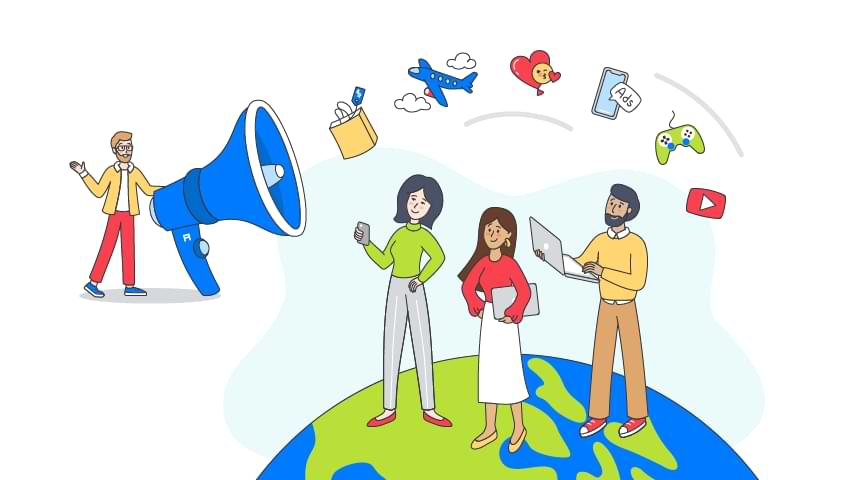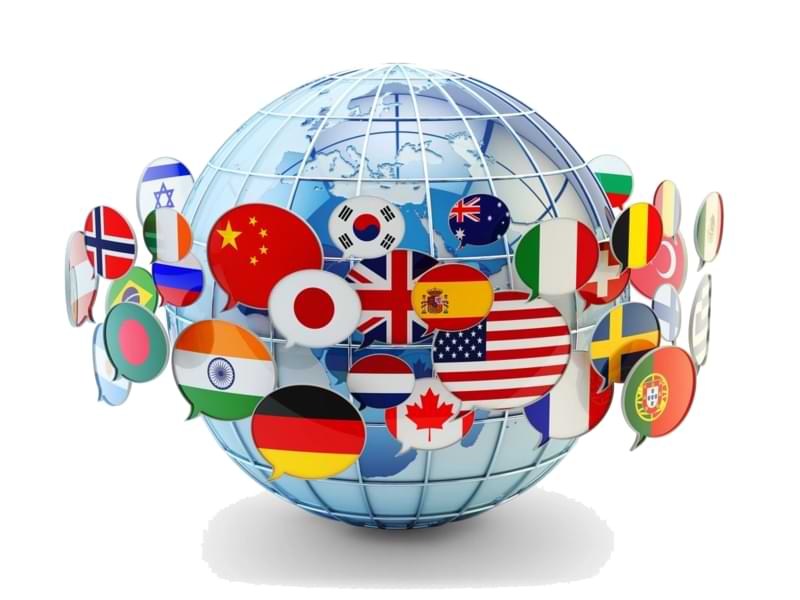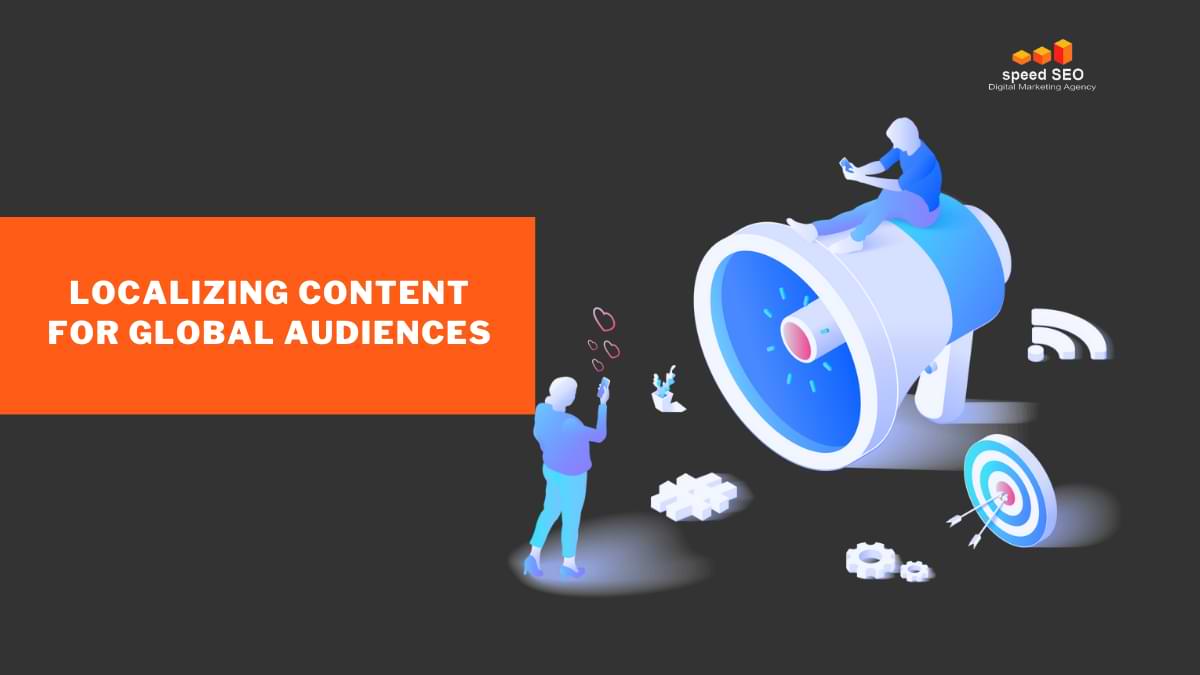Localising content for global audiences is an important step for businesses and organisations looking to make their content accessible to larger audiences. By researching local cultures and language nuances, crafting powerful localised content speaks directly to people from around the globe while being sensitive to cultural differences.
Additionally, include explainer images or videos when needed, hyperlinks back to source material for further research and reference, quotes inspiring action across borders, and services specific to other countries or markets in order to increase opportunities of engagement.
Avoid unfamiliar jargon that may confuse international readers and ensure your message resonates with readers from all over the world! By following these tips you can surface your expert knowledge on a global scale without compromising cultural sensitivity.
What is Global Content Localization?

Global content localization refers to customising content for specific target audiences in different geographical areas.
Rather than simply translating the material into a local language, this process also takes into account cultural trends, nuances, and preferences.
By localising your content, you can increase user experience, involvement and maximise the power of your message in multiple global markets.
Additionally, if you’re introducing a product or campaign to an international audience, consider language differences which might be encountered along the way for best results. Above all else, remember that globalised content should still speak clearly to its readers, despite any geographic location they may reside in!
Benefits of Global Content Localization:
– 📢 Achieving Relevance:
By localising your content to match each individual target market with language, tone and cultural elements that the customers are familiar with, you create a sense of trustworthiness and authenticity.
– ⭐ Improved User Experience:
Over and above translation, localization also takes into consideration factors such as date formats, currencies, and units of measurement, which may differ from one market to another. This will ensure an enjoyable experience for all users by providing them with what they need in exactly the manner they expect.
– 🔍 Enhanced SEO Performance:
Optimise localised content with relevant keywords pertinent to certain markets while aligning it accordingly to their search trends so that your business can reap maximum visibility while increasing audience reach at the same time.
Tips to Localize Content:

1. Analyse user demographics:
The first step to localising content on a website is to analyse the user demographics in that region or country and perform market research to understand their needs and preferences.
This will help inform your decisions about what type of content to include, language translation, and layout design changes.
2. Research cultural associations:
To truly resonate with target audiences, it’s important to consider any cultural nuances associated with certain topics or images on a website, as different regions have varying perspectives around them.
Showing real respect for local cultures encourages users from those areas to keep engaging with your business.
3. Use proper language translations:
Using inaccurate translations can cause issues not only when it comes to understanding but also when establishing trust among your customers in different regions or countries— which is why accurate language localization is key for localised websites.
Make sure translations match regional usage patterns while taking into account contextual clues such as slang words, figurative speech, jargon, etc., which are all necessary for successful communication across languages and borders.
If you’re unsure of the correct terminology in a specific region or language, be sure to consult an experienced freelancer who specialises in that area’s idiom!
4. Utilise interactive elements:
Incorporating interactive elements like videos and GIFs adds more depth than static content alone—especially because online audiences today often prefer audiovisual formats over written text on webpages!
Adding audio recordings of phrases used within certain countries creates further personalization that makes customers feel valued by businesses. Additionally, visuals like product images should reflect how items look in that place and how people use them.
5. Measure your progress:
astly, it’s essential to track the performance of localised content over time in order to optimise it further if needed or develop new strategies tailored for exact locations.
Analyse specific metrics such as conversions from website visitors based on different regions or countries; response rate to specific languages used; number of shares related to a certain campaign within a region, etc.—these are all valuable indicators when measuring the success of localization efforts!
Best Practices for Localization

Successfully reaching global audiences requires localization best practises that accurately tailor content and allow for clear communication with diverse cultures and languages around the world.
To achieve this, ask relevant questions about applicable conventions and cultural norms, utilise pre-existing local resources for precise translations from a native perspective, pay close attention not just to text but to visuals as well that may also need adjusting, and accordingly, give it all one final review before release, no matter how insignificant the changes appear.
A slight alteration can have big implications for its intended message.
Now, let’s have a look at the three most important proven practises when it comes to content localization:
1. Maintain Consistency Across Languages:
When it comes to localization, consistency is king. Maintaining the same branding elements, style, and tone across language versions of your content will help build familiarity and trust with a global audience. Create a style guide and set out clear brand guidelines in order to ensure that all versions are consistent.
Consider carefully if any language-specific characters or emojis are necessary before adding them into your content – they should be used sparingly but appropriately.
It’s also important to remember that citing sources correctly and checking facts for accuracy are fundamental to reliable content sharing around the world! Keep these small details in mind for successful communication worldwide 🌍
2. Consider localization Tools and Services:
There are various tools and services available that can assist in localization. For instance, translation management systems such as MateCat, Crowdin and Smartling are excellent for streamlining the workflow and automating the translation process.
A great feature of these systems is their ability to use ‘translation memory’, which helps preserve consistent terms across numerous repeated uses. Content management systems like Drupal and WordPress also provide features like multilingual blog hosting that make translatable sites a cinch!
Lastly, localization platforms such as OneSkyApp offer instant machine translations, so you don’t have to go through each sentence manually. All in all, with adequate tools on hand, you can easily ensure the uniformity of your content when presenting it to different audiences around the world!
3. Prepare a Glossary of Terms:
Developing a glossary of unique terms relevant to your brand and industry can make all the difference when it comes to localised content. Think about it—establishing these key words and expressions ensures accuracy, consistency, and quality in every translation!
A great reference point for any translators working with your content, this collection of terms and phrases allows them to truly grasp the message you’re aiming to convey. Well, you know what they say: “failure is not an option!”
Therefore, investing in effective translation management tools like SDL WorldServer, SmartMATE by Idiom Technologies, or Text United Translation Management Platform would be definitely worth your while.
Seriously, by doing so you’ll ensure that crucial translations get done properly every single time!
Challenges of Content Localisation
Managing Translation Costs:
Localization can be an expensive process, especially for translations.
Hiring professional translators or utilising translation services can take up the bulk of your budget. But cutting corners on translation quality could mean your content won’t accurately reflect the right meaning, and this could have lasting negative effects on your brand’s reputation.
It’s essential to set aside money to hire professional translators or invest in reliable translation tools because accurate and culturally sensitive content across languages is key to a successful global strategy. Well, you know there’s no need to go cheap when it comes to localization; bad investments made in the short term might end up being more costly than expected!
However, don’t worry 😊 you are in luck as there are excellent translation services and tools available – it’s all about spending that money 👛 wisely!
Staying Up to Date with Changes in Language:
Well, you know, languages evolve. Every day, new words and phrases popping up! It’s a challenge to stay on top of changes in language, but staying current is important if you want your localised content to remain relevant and accurate.
So therefore, it’s essential to regularly review your translated content and update any outdated or incorrect terms. Think about it – Nahom Bright said, “The limits of my language mean the limits of my world,” so make sure that world remains UNLIMITED!
Keeping Content in Sync Across Languages:
Content synchronisation is crucial in the localization process. As you adapt and translate your content for different regions, it’s essential to ensure that all versions of the content remain consistent and aligned with your brand’s messaging and tone.
Inconsistencies and discrepancies in localised content can confuse or alienate global audiences, so careful attention must be given to maintaining consistency across all languages.
5 Strategies for Cost-Effective Content Localization
Content localization is essential for any business that operates internationally. As costs for translation can be high, businesses need to consider how they budget for localization and explore ways to ensure accurate translations while keeping expenses down.
Here are 5 strategies for cost-effective content localization:
1. Prioritise Content:
Well, you know it—not all content needs to be translated.
Therefore, when mapping out your global content strategy, you should seriously think about which pieces of content are high-priority for translation and which ones don’t directly impact the user experience – oh please! This way, you can allocate your translation budget more efficiently and brilliantly put yourself ahead of the game.
So: prioritise wisely and quote Winston Churchill: “It is a mistake to look too far ahead; only one link of the chain of destiny can be handled at a time.” 🤔
2. Explore Machine Translation:
Do you need to translate some text quickly and affordably?
Well, you know, turn to machine translation tools like Google Translate! Though they aren’t always 100% accurate, they can provide a great foundation that professional translators can modify and refine. So, if your content isn’t absolutely critical, don’t be afraid to turn to a technology solution—it could save you both time and money!
3. Leverage Translation Memory:
With Translation Memory, you can save time and money while still ensuring accuracy of your translations.
Wouldn’t it be great if there was a way to use previously translated segments without having to translate them again? Well, you know what? There is! A translation memory system stores these pre-translated segments for consistent results when localizing content. This reduces effort for translators, as they only have to focus on the new or modified parts.
It’s brilliant – leverage translation memory today and experience the benefits of efficient localization!
4. Collaborate with Translation Agencies:
Considering working with a translation agency?
Doing so can grant you access to specialist translators in certain languages and industries, plus cost-effective packages for consistent needs. These advantages help ensure superior translations while also minimising expenses. Plus, the added bonus of having peace-of-mind! 😌🔑
5. Optimize for Reusability:
When creating source content for translation, strive for clarity and simplicity.
Avoid idioms, cultural references, or complex sentence structures that require more time and effort to translate accurately. According to a survey by the World Translation Foundation, up to 75% of businesses report lower costs with simple language in their source texts than with linguistically intricate writing.
By simplifying your source content whenever possible, you can make the translation process faster and more cost-effective. Use phrases such as “therefore”, “thus”, “reduce risk,” and “build trust” where appropriate to invite customers into investing in a product or service; this also helps communicate value and infer growth quickly and effectively.
Quoting industry experts will help convey authority while connecting with readers through factual information. In short: Simplicity is smart – it allows us craft empowering messages that spark curiosity!
Keeping Content in Sync Across Languages
Keeping Content Coordinated Across Languages
When it comes to content localization for global audiences, one key point to consider is keeping the content in sync across different languages.
This helps ensure that your message remains consistent and coherent regardless of which language it’s translated into. To make sure this happens, you should use a Robust Translation Management System (TMS), establish clear style and branding guidelines, leverage Translation Memory, and regularly update translations.
A TMS allows you to manage the translation process while providing version control over multiple languages; Using detailed instructions on tone, voice, formatting, etc. will help maintain consistency throughout all translations.
Leveraging already-translated sentences or phrases from a database known as “Translation Memory” will save time and effort while also reducing costs.
Finally, updating existing translations periodically will keep them accurate and relevant to current developments. By following these strategies, you can rest assured that your localised content stays in sync!
Conclusion
When it comes to reaching a global audience, localization is an imperative step. Localising content includes translating into different languages and referencing local customs or conventions that make sense within the target market.
A localization service can be incredibly helpful for ensuring quick translations of appropriate content while also making sure readers from any corner of the world understand and appreciate it. The aim should always be to maximize Return on Investment (ROI) by doing thorough research into local trends, language conditions, and cultural references; Businesses are more likely to convey their message clearly when these factors are taken into consideration.
It is thus prudent to invest time in understanding markets outside one’s own country – whether this pertains to eCommerce SEO marketing strategies or otherwise – thereby reducing risk and providing concise communication about value with figures of speech used thoughtfully yet effectively wherever applicable!





